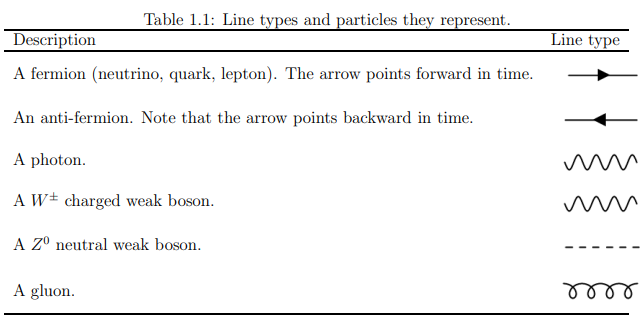PX156 - G1 - introduction
-
the probability of a process to occur in particle physics is frequently difficult to calculate
-
feynmann diagrams were designed to make the calculation easier
-
each element is associated with a particular mathematical term
-
a feynmann diagram can be viewed on two levels:
- mathematical calculation
- a cartoon of what is going on in an interaction
-
a diagram represents a complex number which tells the probability of transitioning from a given initial state to a final state
-
this number is called the amplitude or the matrix element:
- the probability:
- if there are multiple routes for
, then all routes must be accounted for in the probability:
anatomy of a feynmann diagram
- consider a decay:

- the middle part will contain every way to go from
to consisted with conservation laws - terminology:
- the lines representing A, B, C, D are 'external lines', and represent real particles
- lines in the middle are 'internal lines', and represent the transfer of quantum numbers and energy
line styles

- straight line pointing in
time direction: fermion - straight line pointing in
time direction: anti fermion - wavy line: photon
- wavy line:
boson - dashed line:
, - wiggly/springy line: gluon